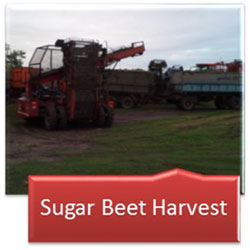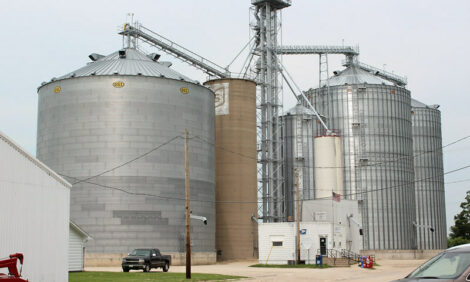



Russia: Hog Markets
RUSSIA - Harvest in Southern Russia is in the final weeks before winter sets in. The main crops here are: barley, wheat, corn, sunflower soybean and sugar beet. While corn and sugar beet are still coming out of the field, reports are back on the other commodities, writes Susan Wulf, Managing Director of Genesus Life Science.Barley was up this year to 14.5 million tonnes, from 13.7 tonnes last year. Sunflower is down to 2.0 million tonnes from last year’s harvest of 2.7, as well as soybeans down to 411.9 million tonnes this year compared to last year’s 431.8 million tonnes.

The exceptional harvest last year, and the good weather in 2013 is reflected in the feed prices. Wheat is down to 5701 rubles (about $184 USD) per tonne from 8035 ($259 USD) rubles last year. Barley 5753 rubles ($185.50 USD) down from 7338 ($238 USD), corn 7551 rubles ($243.50 USD) from 8110 rubles ($262 USD). Sunflower moved from 14000 rubles ($452 USD) to 11000 ($355 USD), while soybeans stayed close, down to 18000 ($580 USD) rubles a tonne from 18500 ($597 USD).
How does that impact hogs? More profit with lower feed prices, of course. nd, to help things further, the highest quality meat (as what is being sold from our nucleus farm in the region) is getting 92 rubles per kilo, or about $1.35 USD per pound, $135 USD CWT.
Modern swine production, as we know it in North America, is very new to Russia – approximately 5 years old. Because of this, and the cost of building modern facilities, the Russian economists estimate that for every kilogram of pork that goes to market from these sites, about 10 rubles pays the loan on the site. That’s about $35 USD. Labor is inexpensive, as well as other inputs (heating fuel, electricity) but feed is the most expensive component here as it is everywhere else. There may be thousands of hectares of arable land, but as of today, the infrastructure is not sufficient to support it. Russia is working on this issue, though, and making improvements every day.

Last year, with Russia entering into the WTO, the whole dynamic of commodities changed here in Russia. Import duties went from 40 per cent down to 5 per cent on pork. What was once a “captive audience” now had to deal with competition, which dropped prices down to below 60 (about $0.87 USD) rubles per kilogram. In January 2013, Russia changed its import policy (restricted imports) and prices came back up.
Russian Vice Premier Arkady Dorkovich in a news conference earlier this year assured the Russian media and people that although imports were down from previous years, there was actually an 11.3 per cent increase (the first half of 2013) in domestic pork production. He also said at that time that Russia has seen an overall decrease of 20 per cent in backyard pigs (entire country) and increase by 28 per cent of the larger producer.
African Swine Fever definitely has impacted the pork production in Russia. A few years ago, the model showed 60-70 per cent backyard pigs, with the remainder being large (over 100 animals) producers. Now the reverse is true – less than 30 per cent of the pigs in Russia are backyard pigs and 70 per cent are being raised on large sites. Especially here in the southern region, there are very few backyard pigs.
Russia is a perfect location for pig production: open land, grains for feed and plenty of available people to work in the farms. Once the infrastructure catches up to the pace that the North American inspired buildings are being built, we will see more Russian pork being exported around the world.
| Genesus Global Market Report Prices for the week of October 7, 2013 | ||
|---|---|---|
| Country | Domestic price (own currency) | US dollars (Liveweight a lb) |
| USA (Iowa-Minnesota) | 89.8 USD/lb carcass | 66.45¢ |
| Canada (Ontario) | 172.35 CAD/kg carcass | 60.37¢ |
| Mexico (DF) | 23.3 MXN/kg liveweight | 82.12¢ |
| Brazil (South Region) | 3.83 BRL/kg liveweight | 80.31¢ |
| Russia | 75.58 RUB/kg liveweight | $1.07 |
| China | 15.22 RMB/kg liveweight | $1.13 |
| Spain | 1.404 EUR/kg liveweight | 86.09¢ |
| Viet Nam | 45000 VND/kg liveweight | 96.74¢ |
| South Korea | 3257 KRW/g liveweight | $1.39 |









